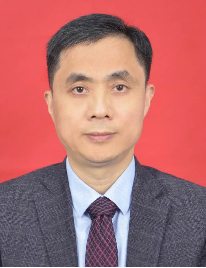High-throughput Evaluation and Prediction of Service Behavior of Weld Joint of the Primary Pipeline in Nuclear Power Plants
Peng Qunjia1*, Zhang Tao2, Xue Fei1, Hou Huaiyu3, Shen Yao4, Liu Wei3, Zhang Lefu4, Han Yaolei1, Mei Jinna1
1 Suzhou Nuclear Power Research Institute, Suzhou, 215004, China
2 Northeastern University, Shenyang, 110167, China
3 Nanjing University of Science & Technology, Nanjing, 210094, China
4 Shanghai Jiao Tong University, Shanghai, 200030, China
EXTENDED ABSTRACT: The main pipeline is one of the core components of nuclear power plants. It has been operating under high temperature, high pressure, and strong corrosive environments for a long time. Welding is the most important connection process for the main pipeline. During the service life, the welded part is the weakest part of the main pipeline. It is prone to cracking and failure under the coupling effect of stress-corrosion-thermal aging. Multi-scale simulation, high-throughput evaluation and modeling based on big data technology are important development directions for the research on the service behavior of primary circuit main pipeline weld joint. (1) Multi-scale Simulation. Starting from classical corrosion theory, using material genome ideas, develop high-throughput, cross-scale calculation methods, from three aspects, namely, the calculation of the corrosion potential of the solid/liquid interface, the calculation of the corrosion electrochemical kinetic curve, and the points with random characteristics, establish the corrosion model to solve the incompatibility between the calculation of basic physical property parameters in the simulation calculation of corrosion damage and the classic corrosion theory, and establish a bridge between the first-principles calculation and the basic concept of corrosion to ensure that the simulation calculation model has randomness, to achieve the leap from "Profile-likeness" to "Soul-likeness". (2) High-throughput Evaluation. Based on the integrated design idea of multi-specimen series loading, multi-parallel tensile axis and multi-crack length monitoring channel, a servo loader with multiple loading modes such as fatigue, constant load, slow tension, and constant displacement is used to design and build, accurately controllable high temperature and high pressure water experiment system, development of efficient and integrated evaluation technology that simulates the stress corrosion cracking/environmental fatigue behavior of the primary circuit water environment. Research and development of high-throughput stress corrosion/environmental fatigue test platform, crack initiation and expansion data acquisition efficiency improved 4-16 times. (3) Service Life Prediction. Based on stress corrosion cracking/environmental fatigue crack initiation and propagation simulation models, combined with industry experience data, literature data and experimental data, data mining methods are used to construct stress corrosion cracking/environmental fatigue crack initiation models and stress corrosion/environmental fatigue cracks that consider the effects of thermal aging Extend the model. The initiation and propagation prediction model of welded joints is established, and the prediction result is R2>0.8.

Peng Qunjia has completed his PhD from Tsinghua University. He has been an associate professor of the Faculty of Engineering of Tohoku University in Japan, and a Professor of the Institute of Metal Research of the Chinese Academy of Sciences. In 2016, he joined Suzhou Nuclear Power Research Institute as a chief expert. For years he has been engaged in research on nuclear power plant aging and life management technology. He received the scholar of the "Hundred Talent Program" of the Chinese Academy of Sciences, and Jiangsu Province Innovation and Entrepreneurship Leadership program. Since 2020, he has been the chief investigator of the national key research and development program "Development and Verification of Advanced Intelligent Aging Monitoring and Detection Technologies for Important Components of Nuclear Power Plants. He is a member of the Chinese Society for Corrosion and Protection, and a member of the Environment Assisted Fracture Committee of the Chinese Society for Corrosion and Protection.